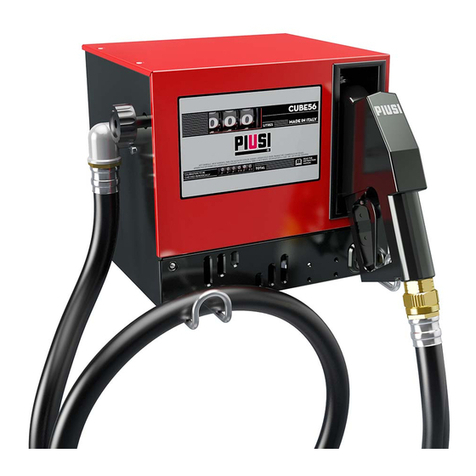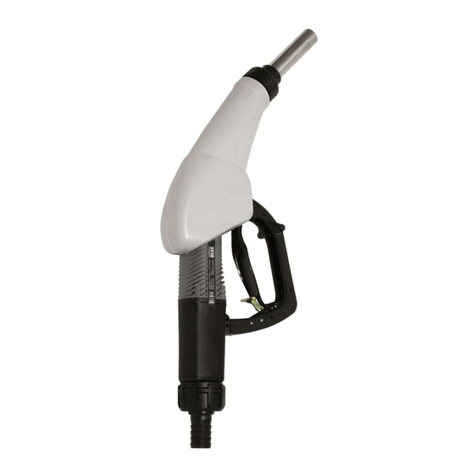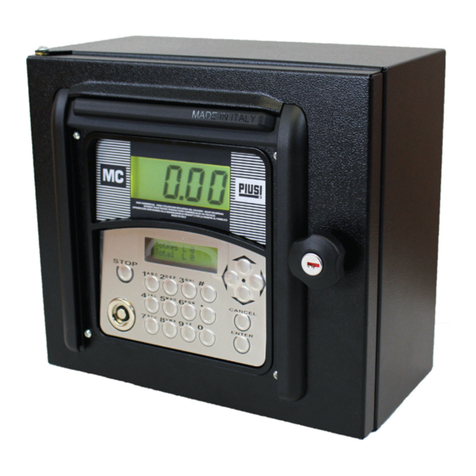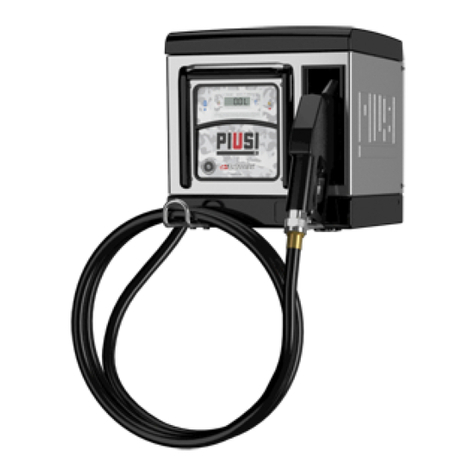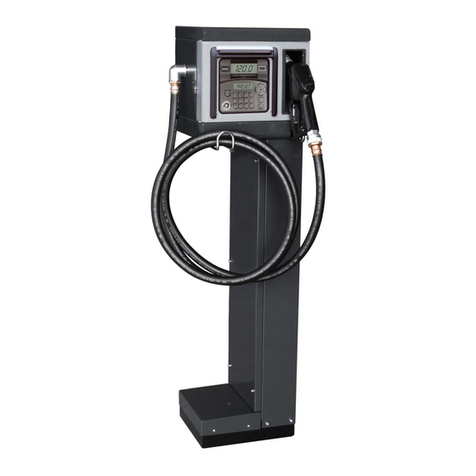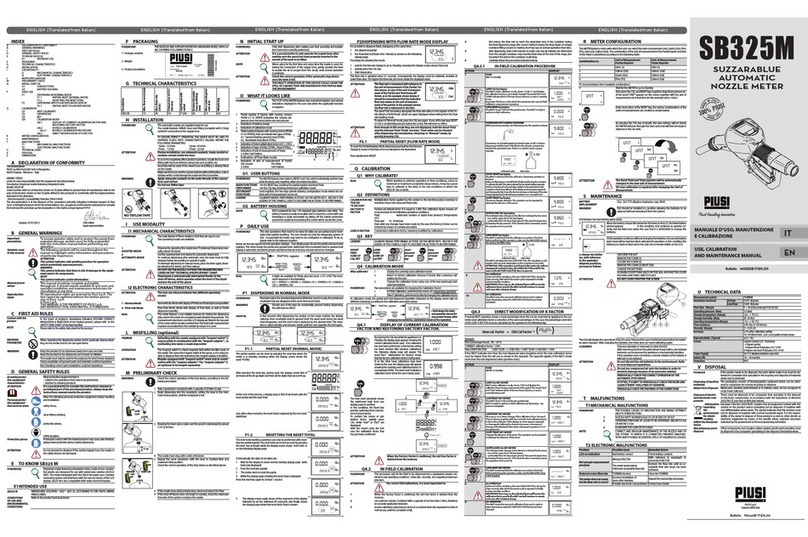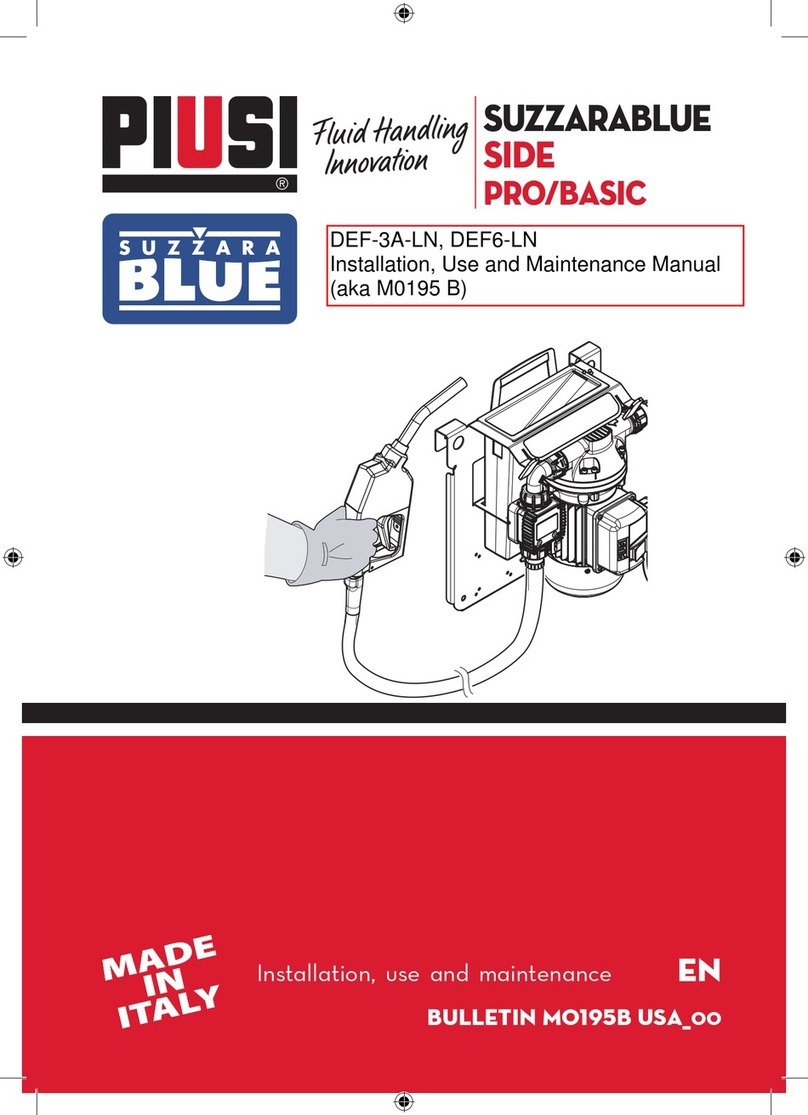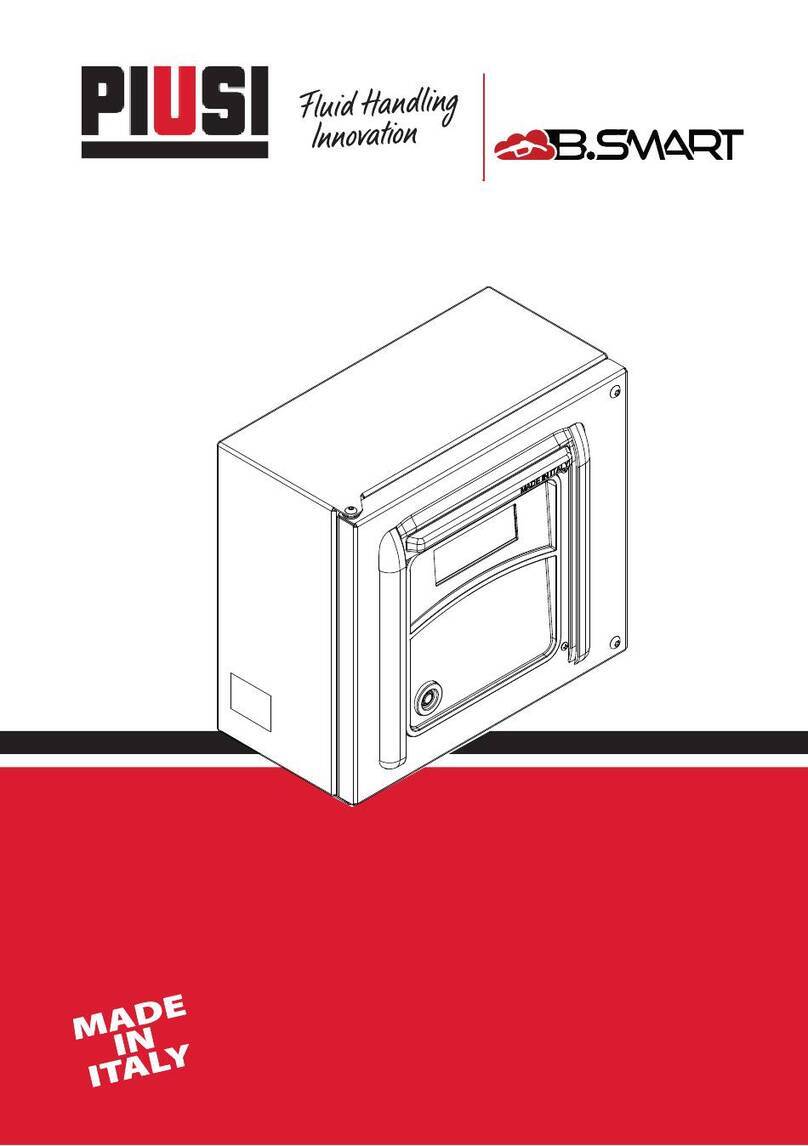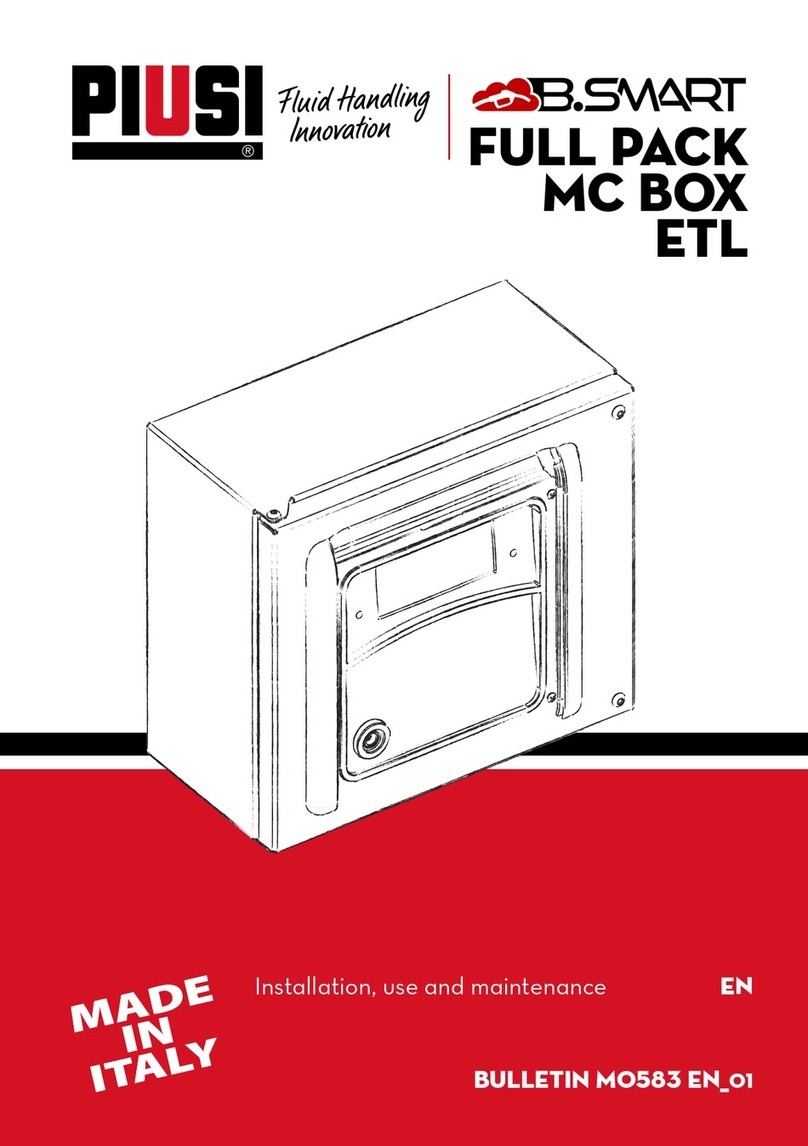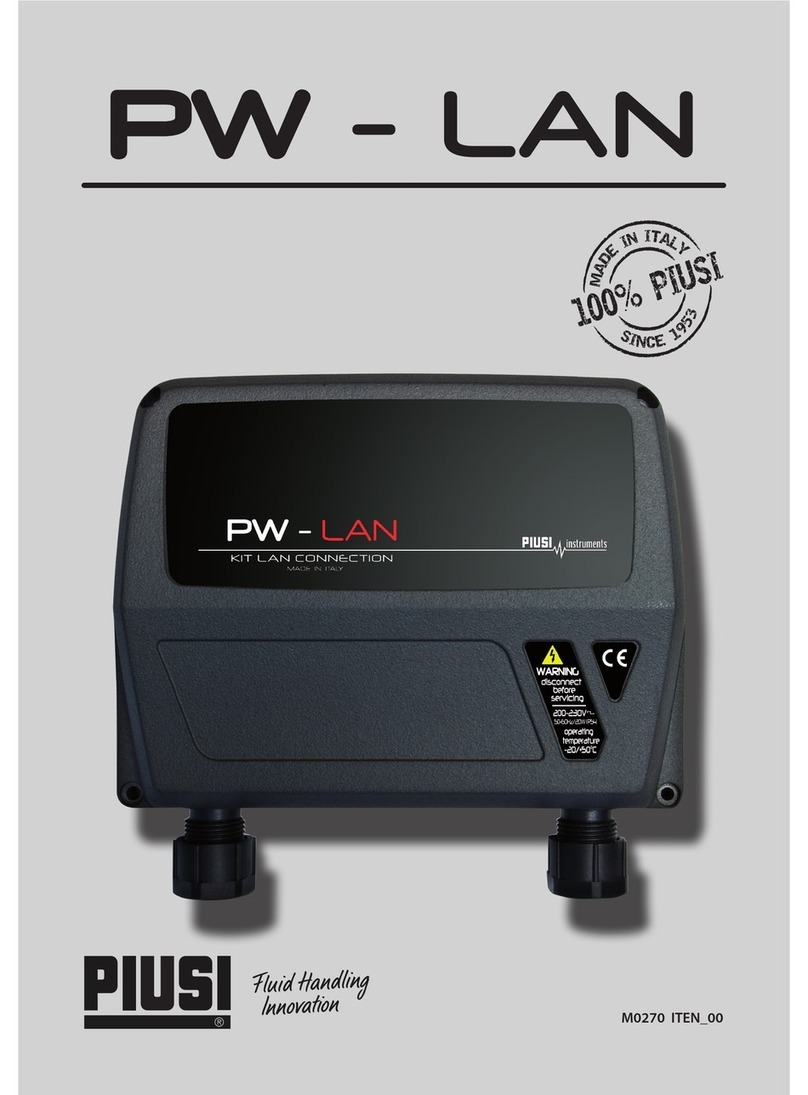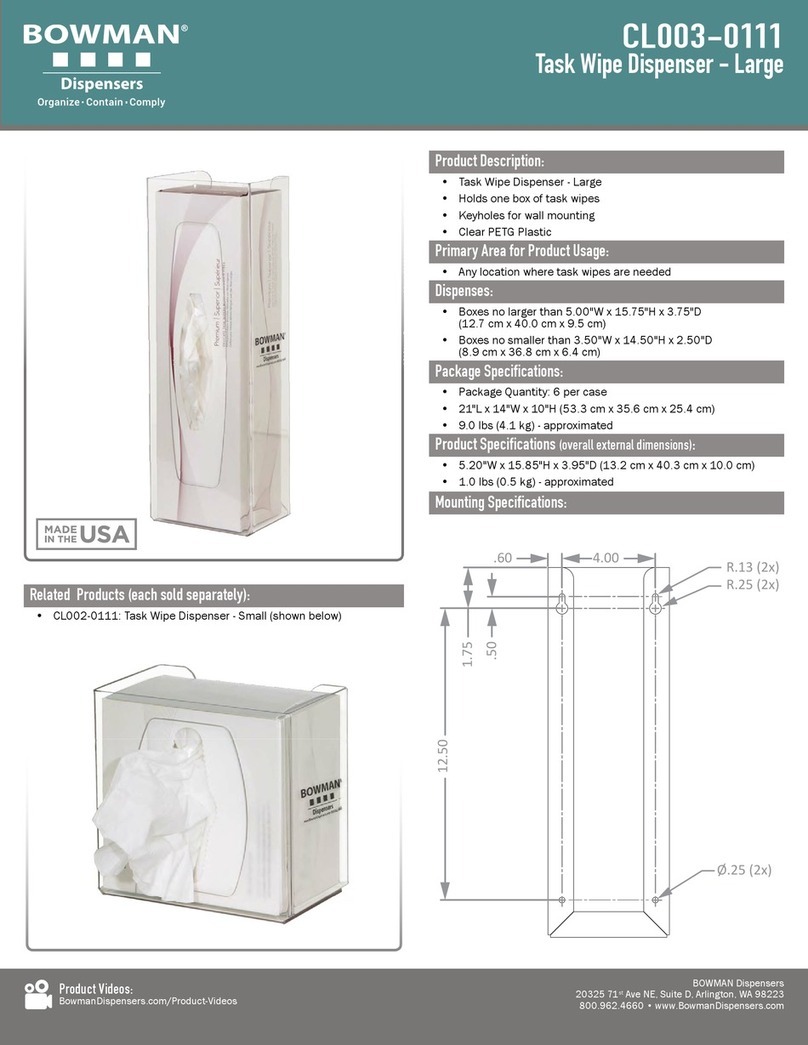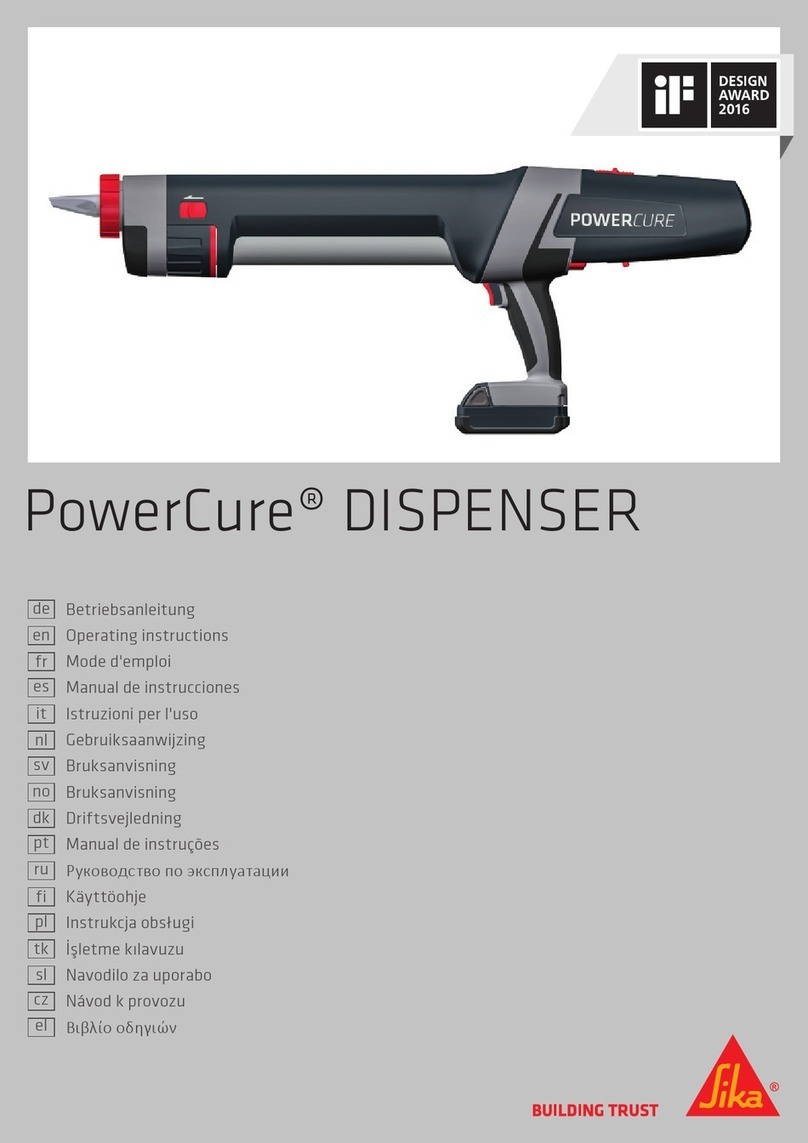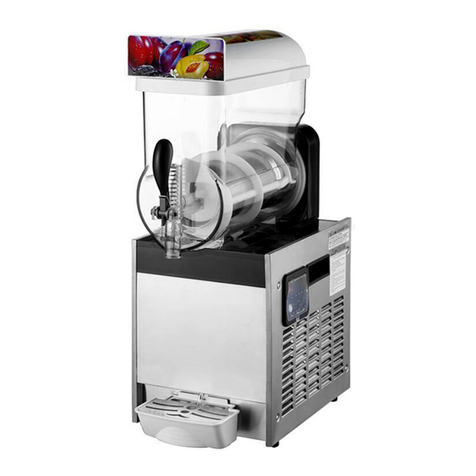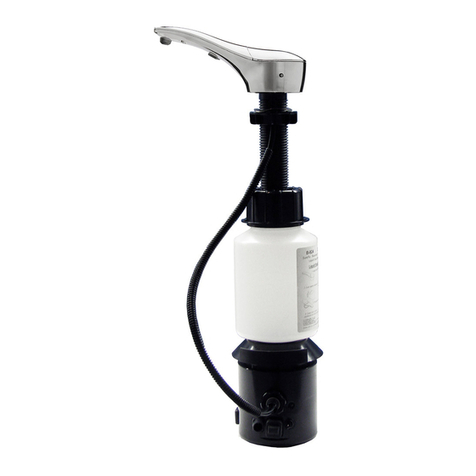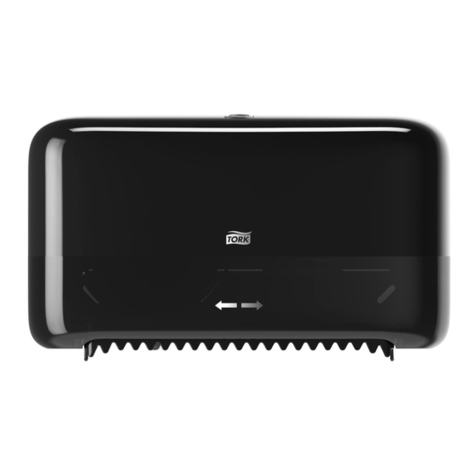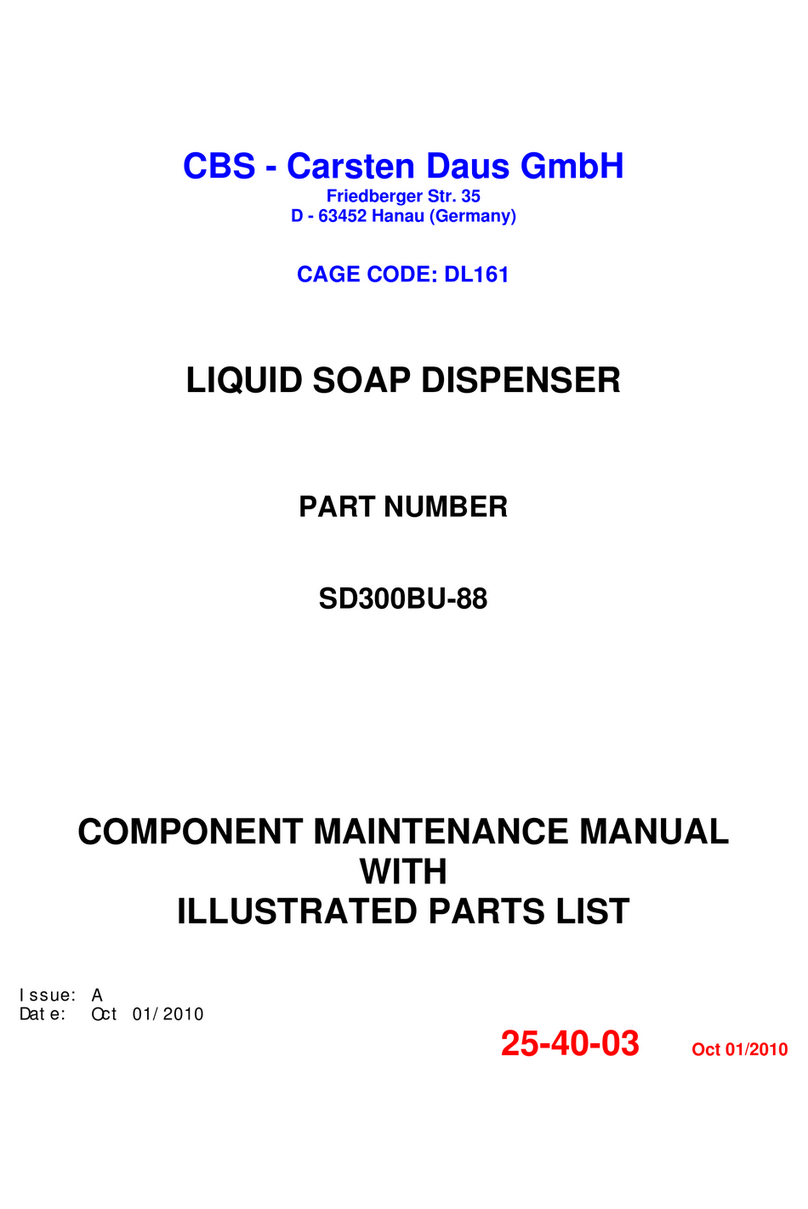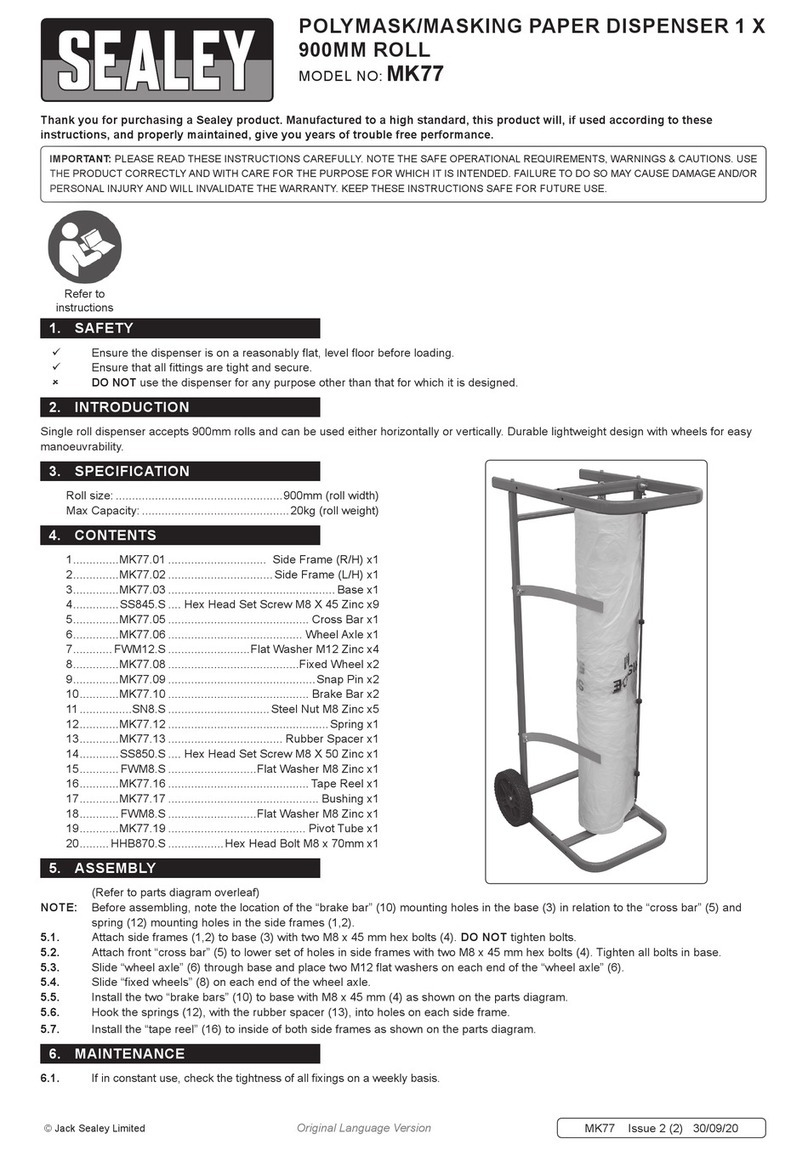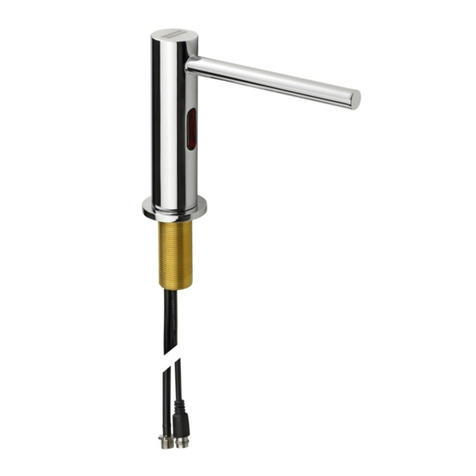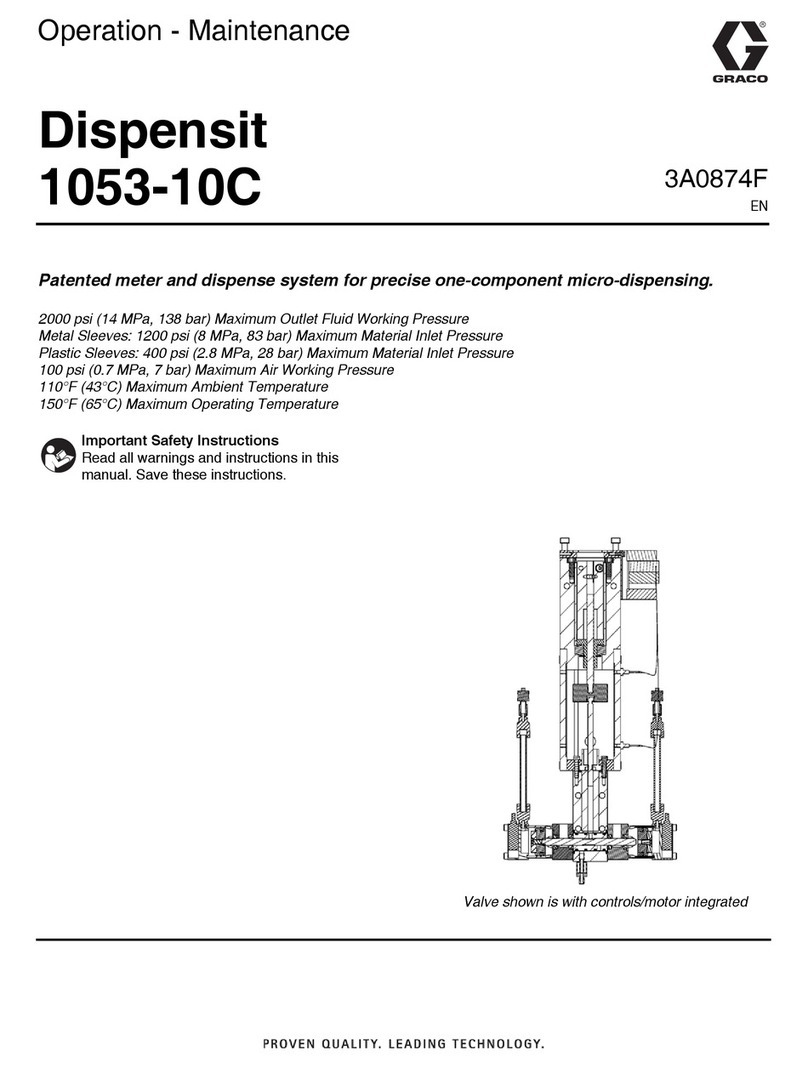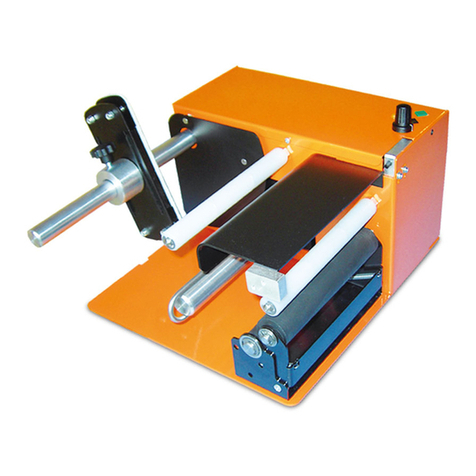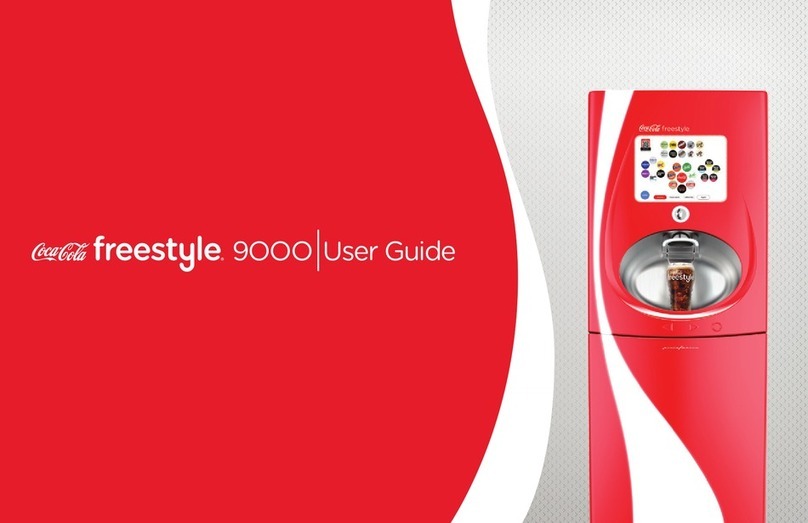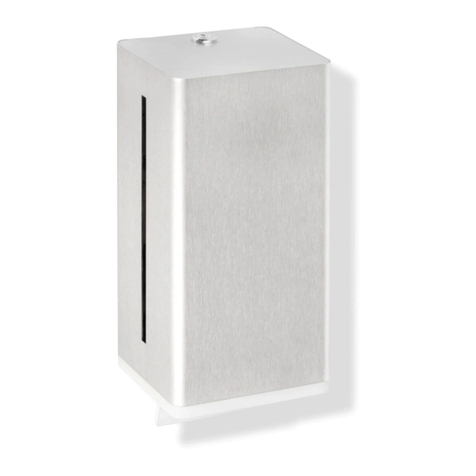ITALIANO (Lingua originale) ITALIANO (Lingua originale) ITALIANO (Lingua originale) ITALIANO (Lingua originale) ITALIANO (Lingua originale) ITALIANO (Lingua originale) ITALIANO (Lingua originale)
1 INDICE
1 INDICE
2 CONFORMITÀ’
2.1 DICHIARAZIONE CE DI CONFORMITA’
2.2 DICHIARAZIONE DI COMPATIBILITA’
3 AVVERTENZEGENERALI
4 ISTRUZIONI DI SICUREZZA
4.1 AVVERTENZE DI SICUREZZA
4.2 NORME DI PRONTO SOCCORSO
4.3 NORME GENERALI DI SICUREZZA
5 IMBALLO DEL SISTEMA DI DISTRIBUZIONE
5.1
CONTENUTO DELL’IMBALLO
5.2 COMPOSIZIONE DELPHIN PRO
6
IDENTIFICAZIONE MACCHINA E COSTRUTTORE
6.1 POSIZIONE DELLE TARGHETTE
7 CARATTERISTICHE TECNICHE
8 DESTINAZIONE D’USO
9 CARATTERISTICHE DEL PRODOTTO TRATTATO
10 INSTALLAZIONE
11 ASSEMBLAGGIO
12 FUNZIONAMENTO E USO
12.1 DISPLAY
12.2 LEVA DI REGOLAZIONE PORTATA
12.3 FASI DI EROGAZIONE
12.4 SENSORI DI FINE RIFORNIMENTO
13 INUTILIZZO DEL SISTEMA PER LUNGHI PERIOD
I
14 LAVAGGIO DEL SISTEMA
15 MANUTENZIONE
16 DIAGNOSTICA
17 DEMOLIZIONE E SMALTIMENTO
2 CONFORMITA’
2.1 DICHIARAZIONEDICONFORMITA’
La sottoscritta:
PIUSI S.p.A
Via Pacinotti 16/A z.i. Rangavino
46029 Suzzara - Mantova - Italia
DICHIARA
sotto la propria responsabilità, che l’apparecchiatura descritta in appresso:
Descrizione : Distributore AD-Blue® per automobili.
Modello: Delphin PRO
Matricola: riferirsi al Lot Number riportato sulla targa CE apposta sul prodotto
Anno di costruzione: riferirsi all’anno di produzione riportato sulla targa CE apposta sul
prodotto.
è conforme alle disposizioni legislative che traspongono le direttive:
- Direttiva Macchine 2006/42/CE
- Direttiva Bassa Tensione 2014/35/UE
- Direttiva Compatibilità Elettromagnetica 2014/30/UE
La documentazione è a disposizione dell’autorità competente su motivata richiesta presso
La persona autorizzata a costituire il fascicolo tecnico e a redigere la dichiarazione è Otto
Varini in qualità di legale rappresentante.
Suzzara 20/04/2016
Otto Varini
il legale rappresentante
2.2 DICHIARAZIONEDICOMPATIBILITA’
La sottoscritta:
PIUSI S.p.A
Via Pacinotti 16/A z.i. Rangavino
46029 Suzzara - Mantova - Italia
DICHIARA
CHE LE PARTI DI DELPHIN PRO A DIRETTO CONTATTO CON I LIQUIDI TRATTATI,
SONO STATI TESTATI SECONDO LE SEGUENTI NORMATIVE
ISO22241-1 : 2006 (norma di qualità)
motori Diesel - agente di riduzione NOx AUS 32 - parte 1: Requisiti di qualità
e sono stati testati con i requisiti della seguente norma
ISO22241-2 : 2006 (norma di qualità)
motori Diesel - agente di riduzione NOx AUS 32 - parte 2: Metodi di prova
Il liquido Adblue, sia prima che dopo il test, è risultato entro il limite specificato AUS32
(AdBlue) in conformità con ISO22241-2-2006 (secondo la norma DIN V 70070)
Suzzara 20/04/2016
Otto Varini
il legale rappresentante
3 AVVERTENZE GENERALI
Avvertenzeim-
portanti
Per salvaguardare l’incolumità degli operatori, per evitare possibili
danneggiamenti al sistema di distribuzione e prima di compiere
qualsiasi operazione sul sistema di distribuzione è indispensabile
aver preso conoscenza di tuo il manuale istruzioni.
Simbologia
utilizzata nel
manuale
Sul manuale verranno utilizzati i seguenti simboli per evidenziare
indicazioni ed avvertenze particolarmente importanti:
Questo simbolo indica norme antinfortunistiche per gli opera-
tori e/oeventuali persone esposte.
Questo simbolo indica che esiste la possibilità di arrecaredanno
alle apparecchiature e/o ai loro componenti.
Questo simbolo segnala informazioni utili.
Conservazione
del manuale
Il presente manuale deve essere integro e leggibile in ogni
sua parte, l’utente finale ed i tecnici specializzati autorizzati
all’installazione e alla manutenzione, devono avere la possibilità di
consultarlo in ogni momento.
Dirii di
riproduzione
Tutti i diritti di riproduzione di questo manuale sono riservati alla
Piusi S.p.A.
Il testo non può essere usato in altri stampati senza autorizzazione
scritta della Piusi S.p.A.
© Piusi S.p.A.
IL PRESENTE MANUALE È PROPRIETÀ DELLA PIUSI S.p.A.
OGNI RIPRODUZIONE ANCHE PARZIALE E’ VIETATA.
Il presente manuale è di proprietà di Piusi S.p.A. , la quale è
esclusiva titolare di tutti i diritti previsti dalle leggi applicabili, ivi
comprese a titolo esemplificativo le norme in materia di diritto
d’autore. Tutti i diritti derivanti da tali norme sono riservati a
Piusi S.p.A. Sono espressamente vietate , in mancanza di previa
autorizzazione scritta di Piusi S.p.A.: la riproduzione anche parziale
del presente manuale, la sua pubblicazione, modifica, trascrizione,
comunicazione al pubblico, distribuzione, commercializzazione in
qualsiasi forma, traduzione e/o elaborazione,prestito, ed ogni altra
attività riservata per legge a Piusi S.p.A.
4 ISTRUZIONI DI SICUREZZA
4.1 AVVERTENZEDISICUREZZA
ATTENZIONE
Rete elerica
- verifiche
preliminari
all’installazione
Prima dell’installazione, assicurarsi che la rete di alimentazione
elettrica sia dotata di adeguata linea messa a terra e conforme
alle norme vigenti.
ATTENZIONE
Evitare assolutamente il contatto tra l’alimentazione elettrica
e il liquido da pompare.
Interventi di
controllo manu-
tenzione
Prima di qualsiasi intervento di controllo o manutenzione, togliere
tensione all’impianto scollegando la spina dalla presa di corrente.
Divieti
ATTENZIONE
È assolutamente vietato sostenere o trasportare il sistema per
mezzo del cavo di alimentazione elettrica.
È assolutamente vietato sostenere o trasportare il sistema per
mezzo del tubo di aspirazione o per mezzo del tubo di mandata.
ATTENZIONE
In caso di sospetta contaminazione del liquido nel serbatoio
auto sanificare il serbatoio.
Non usare il Delphin PRO prima del ripristino
NORMEDIPRONTOSOCCORSO
Contao con il
prodoo
Per problematiche derivanti dal prodoo traato con OCCHI,
PELLE, INALAZIONE e INGESTIONE fare riferimento alla
SCHEDA DI SICUREZZA DEF
Persone colpite
da scariche elet-
triche
Staccare l’alimentazione, o usare un isolante asciuo per
proteggersi nell’operazione di spostamento dell’infortunato
lontano da qualsiasi conduore. Evitare di toccare l’infortunato
con le mani nude fino a che quest’ultimo non sia lontano da
qualsiasi conduore. Chiedere immediatamente l’aiuto di
persone addestrate e qualificate. Non interveniresugli interruori
a mani bagnate.
NOTA
Fare riferimento alle schede di sicurezza del prodotto
NORMEGENERALIDISICUREZZA
Caraeristiche
essenziali dell’
equipaggiamento di
protezione
Indossare un equipaggiamento di protezione che sia:
• idoneo alle operazioni da effeuare;
• resistente ai prodoi impiegati per la pulizia.
Dispositivi di
protezione
individuale da
indossare
Durante le fasi di movimentazione ed installazione,
indossare i seguenti dispositivi di protezione individuale:
scarpe antinfortunistiche;
indumenti attillati al corpo;
guanti di protezione;
occhiali di sicurezza;
Altri dispositivi manuale di istruzioni
Guanti proteivi
Il contao prolungato con il prodoo traato può provocare
irritazione alla pelle; durante l’erogazione, utilizzare sempre i
guanti di protezione.
PERICOLO
Non toccare mai la spina e la presa con le mani bagnate
Non accendere Il sistema di distribuzione nel caso
il cavo di allacciamento alla rete o parti importanti
dell’apparecchio,per es. il tubo di aspirazione/mandata, la
pistola, oppure i dispositivi di sicurezza siano danneggiati.
Sostituire immediatamente il tubo danneggiato.
Prima di ogni utilizzo, controllare che il cavo di
allacciamento alla rete e la spina di alimentazione non
presentino danni. Far sostituire immediatamente il cavo
di allacciamento alla rete danneggiato, da un elettricista
specializzato.
ATTENZIONE
L’allacciamento tra spina e presa deve rimanere lontano
dall’acqua.
Prolunghe non adatte possono risultare pericolose.
All’aperto,utilizzate solo prolunghe autorizzate e previste
per quell’utilizzo, con sezione di conduzione sufficiente,
in base alle normative vigenti.
Per motivi di sicurezza si consiglia, in linea di principio,
di utilizzare l’apparecchio solo con un interruttore
differenziale (max 30mA).
5 IMBALLO DEL SISTEMA DI DISTRIBUZIONE
Il sistema di distribuzione è fornito imballato in una scatola di cartone, sulla quale sono apposte
le seguenti indicazioni:
- freccia indicante il lato ALTO;
- etichea riportante le informazioni dell’apparecchiatura (modello, peso, ecc..).
CONTENUTODELL’IMBALLO
Premessa
Per aprire l’imballo in cartone, utilizzare delle forbici o un
taglierino, avendo cura di non danneggiare il sistema di
distribuzione o i suoi componenti. Aprire l’imballo e verificare
che al suo interno siano presenti i seguenti componenti forniti
in dotazione:
NOTA
Nel caso in cui uno o più componenti di seguito descritti
non siano presenti all’interno della confezione, contattare il
servizio di assistenza tecnica del costruttore.
ATTENZIONE
Verificare che i dati di targa corrispondano a quelli desiderati.
Per qualsiasi anomalia, contattare immediatamente il
fornitore, segnalando la natura dei difettie, in caso di dubbio
sulla sicurezza dell’apparecchiatura,non utilizzarla.
COMPOSIZIONEDELPHINPRO
4
5
1
2
3
1CARRELLO PORTA FUSTO 4 MANICO CON STAFFA
2CARRELLO RUOTE 5 BIDONE (FORNITO SEPARATAMENTE)
3KIT RUOTE
6 IDENTIFICAZIONE MACCHINA E
COSTRUTTORE
Il sistema di distribuzione è provvisto di una targa di
identificazione applicata direamente sulla pompa che riporta
le seguenti informazioni:
• modello;
• numero di loo / Anno di costruzione;
• dati tecnici;
• codice del libreo uso e manutenzione.
ATTENZIONE
Verificare sempre prima dell’installazione che il
modello di sistema di distribuzione sia corretto e adatto
all’alimentazione effettivamente disponibile (Tensione /
Frequenza).
POSIZIONEDELLETARGHETTE
Sul sistema di distribuzione vi sono applicate alcune
decalcomanie e/o targhee per indicare all’operatore le
informazioni di maggior rilevanza. Occorre verificare che nel
tempo queste non si deteriorino o si stacchino.
NOTA
Se dovesse verificarsi questa situazione preghiamo di
contattare il nostro ufficio assistenza per farvi spedire le
targhe rovinate o mancanti, per riapplicarle dove previsto
in origine.
Le decalcomanie presenti sono le seguenti:
nlr
m
1
- guanti di protezione
- occhiali di protezione
- indumenti attillati al corpo
- consultare il manuale uso e manutenzione
- scarpe anti infortunistiche
2 - etichetta per uso solo con soluzioni acqua/urea
3 - targa CE con dati tecnici
7 CARATTERISTICHE TECNICHE
Dimensioni di massima
Lunghezza (A) 800 mm
Profondità (B) 860 mm
Altezza (C) 1200 mm
Peso
Delphin PRO 36 kg
Dati Tecnici
Voltaggio 220 / 230 V
Frequenza 50 / 60 Hz
Potenza 400 W
Assorbimento 1,35 A
Temperatura di esercizio + 5 °C / + 40 °C
8 DESTINAZIONE D’USO
Uso previsto
Il sistema di distribuzione “Delphin PRO” è stato progettato
e costruito per la distribuzione del prodotto denominato
AdBlue®, D.E.F (Diesel Exaust Fluid), o acqua.
Condizioni di
utilizzo
Il sistema di distribuzione “Delphin PRO” deve essere utilizzato
nel rispetto delle seguenti condizioni:
Temperatura max del prodotto da erogare: +35 °C.
Temperatura min del prodotto da erogare: -11 °C.
Temperatura max del prodotto da erogare ammessa dai
materiali: +40°C.
Variazione di tensione ammessa: +/- 5%
Livello di pressione acustica continuo equivalente nei posti di
lavoro: ≤75 dB(A)
Assicurarsi che la pompa lavori nel suo campo di funzionamento
nominale.
ATTENZIONE
Liquidi infiammabili
e atmosfera
esplosiva
Il sistema “Delphin PRO” non è stato progettato per la distri-
buzione di gasolio, benzina, liquidi infiammabili con punto di
esplosione <55°C/131°F, o per operare in ambienti con atmo-
sfera potenzialmente esplosiva. Se ne vieta pertanto l’utiliz-
zo nelle sopra citate condizioni.
ATTENZIONE
Uso non previsto
È assolutamente vietato l’utilizzo del sistemaper scopi diver-
si da quelli previsti e specificati al punto “Uso previsto”.
Ogni altro utilizzo che non sia quello per cui il sistema è stato
progettato e descritto in questo manuale si considera “USO
IMPROPRIO”, pertanto il costruttore declina ogni responsa-
bilità per eventuali danni causati a cose, persone, animali o
al sistema stesso.
9 CARATTERISTICHE DEL PRODOTTO
TRATTATO
Prodoi consentiti
Il sistema di distribuzione “Delphin PRO” è stato progeato e
costruito per la distribuzione di un liquido speciale costituito
da una miscela di acqua e urea, denominato AdBlue®/D.E.F.,
sulla base dedgli standard ISO 22241 Delphin PRO è utilizzabile
anche con acqua
ATTENZIONE
Prodoi non
consentiti
Tui i prodoi non citati nel paragrafo “Destinazione d’uso” e
nel paragrafo “Caraeristiche del prodoo traato”, sono da
considerarsi non consentiti, impropri e pertanto vietati.
Il costruore declina ogni responsabilità per danni a persone
o cose dovuti alla mancata osservanza di questa prescrizione.
10 INSTALLAZIONE
Premessa
Il sistema di distribuzione “Delphin PRO” è stato progeato e
predisposto a bordo di un carrello per favorire la facilità di uso
ed erogazione.
Personale
autorizzato
all’installazione
Le operazioni di installazione devono essere eseguite solo da
personale competente e autorizzato, che deve:
- provvedere alla correa installazione degli accessori necessari
al correo funzionamento della pompa;
- utilizzare esclusivamente gli accessori in dotazione al sistema.
ATTENZIONE
È assolutamente vietato l’utilizzo di accessori inadatti e non
forniti con ilsistema. Il costruttore declina ogni responsabilità
per danni a persone, cose o all’ambiente, dovuti alla mancata
osservanza di questa prescrizione.
ATTENZIONE
Il sistema di distribuzione Delphin PRO è ad esclusivo uso
professionale
ATTENZIONE
Il sistema di distribuzione Delphin PRO deveessere utilizzato
in luogo sufficientemente illuminato, in conformità con le
normative vigenti.
ATTENZIONE
Il sistema di distribuzione Delphin PRO è stato progettato
per essere utilizzato in luogo asciutto. I
11 ASSEMBLAGGIO
Assemblare come da figure
Vedere numerazione componenti
ATTENZIONE
Le ruote possono essere montate all’interno oppure
all’esterno del telaio, a seconda del tipo di bidone.
1 - Montaggio ruote su carrello
2 - Montaggio staffa e manico 3 - Montaggio bidone sul carrello
4 - Collegamento tubi al bidone
12 FUNZIONAMENTO E USO
AVVERTENZA
Per eliminare eventuali residui di sostanze e corpi estranei
presenti nelle tubazioni, eseguire un lavaggio dell’impianto
prima della sua effettiva messa in funzione. Per effettuare il
lavaggio seguire le stesse modalità di erogazione utilizzando
acqua demineralizzata o deionizzata, effettuando l’ultimo
risciacquo con l’ADBlue®
Premessa
Sono di seguito descrie le operazioni da effeuare per avviare e
arrestare il funzionamento del sistema.
ATTENZIONE
Durante il funzionamento il motore può essere caldo, porre
attenzione.
AVVERTENZA
Per il buon funzionamento del sistema, prevedere 20 minuti di
stop erogazione ogni 20 minuti di erogazione.
AVVERTENZA
Quando il sistema non è in funzione si raccomanda di tenere
spenta la pompa.
ATTENZIONE
Nel caso in cui venga a mancare tensione è necessario mettere
l’interruttore in posizione OFF e riporre la pistola nella sua
sede
ATTENZIONE
PERDITE DI LIQUIDO POSSONO CAUSARE DANNI A COSE
E PERSONE.
ATTENZIONE
Rispettare scrupolosamente i limiti di portata massima
riportati sulla targa.
AVVERTENZA
Per nessuna ragione i dati riportati sulla targhetta, i bolli di
chiusura e di legalizzazione possono essere alterati o rimossi.
In caso di manomissione o rimozione decade immediatamente
la garanzia e l’azienda produttrice non risponde di eventuali
danni sia materiali che economici che ne potessero derivare.
ATTENZIONE
Non trascinare la macchina tirando dal cavo o dal tubo.
ATTENZIONE
Finita l’operazione di carico riposizionare l’erogatore nella sua
sede.
DISPLAY
A B
H G F
D
C
E
APulsante POWER: viene utilizzato per dare tensione all’impianto.
BPulsante REFILL: premere per almeno 5 secondi per far partire l’erogazione.
CLED rosso/verde
DQuantità di liquido
EPortata
FPulsante MODE
GPulsante di RESET
HEtichetta macchina
ATTENZIONE
Se l’etichettaⒽrisulta danneggiata NON utilizzare la macchina
e sostituire immediatamente l’etichetta.
TABELLADISEGNALAZIONELED
Lampada bianca LEDRosso LEDVerde
Off X X Sistema spento
On Off Off Stand By
In aesa di comandi
On Off Fast Blink Inizio Sequenza di avvio
On Off On Erogazione
On Off Slow Blink Erogazione terminata
Livello pieno
On Fast Blink Off Erogazione terminata
Tempo esaurito
On Slow Blink Off Portata Selezionata
troppo elevata
LEVADIREGOLAZIONEPORTATA
NOTA
La leva di regolazione è posizionata nella parte laterale del
carrello.
Leva in posizione di
BA SS A POR TATA
Leva in posizione di
STOP
Leva in posizione di
ALTA P ORTATA
ATTENZIONE
Utilizzare la leva di regolazioneport ata come da indicazione.
Se utilizzata in modalità “Furgone” quando si deve riempire
un’auto potrebbedanneggiare il veicolo.
FASIDIEROGAZIONE
1. Collegare il connettore all’auto.
2. Premere il pulsante POWER .
3. Premere il pulsante REFILL per 5 secondi.
4. Attendere la fine dell’erogazione.
5. Scollegare il connettore.
6. Riporre il connettore nell’apposito alloggiamento.
ATTENZIONE
NON MANOVRARE SE:
- IL CONNETTORE NON E’ AGGANCIATO AL
SERBATOIO AUTO
- IL CONNETTORE NON E’ AGGANCIATO
ALL’APPOSITO GANCIO DI SICUREZZA.
SENSORIDIFINERIFORNIMENTO
1
2
1n° 2 sensori di FINE RIFORNIMENTO: vengono utilizzati per bloccare l’erogazione
2VALVOLA ANTIGOCCIA: evita la fuoriuscita del liquido.
AVVERTENZA
Sul bidone (fornito dal cliente) vanno montati il pescante e il
ritorno aria liquido.
13 INUTILIZZO DEL SISTEMA PER LUNGHI
PERIODI
Operazioni da
effettuare
Nel caso in cui si preveda di non utilizzare il sistema per almeno
15 giorni, occorre procedere allo svuotamento dello stesso, per
evitare la cristallizzazione del prodotto all’interno dell’impianto,
seguito dal ciclo di lavaggio.
14 LAVAGGIO DEL SISTEMA
Premessa Il lavaggio del sistema di distribuzione è necessario affinché
vengano rimosse le cristallizzazioni del prodotto che
potrebbero causare un danneggiamento dell’impianto.
ATTENZIONE Eseguire le operazioni di lavaggio, avendocura di indossare
tutti i dispositivi di protezione individuale (DPI).
ATTENZIONE Per il lavaggio dell’impianto, utilizzare solo acqua
demineralizzata.
Smaltimento Smaltire il liquido derivante dal lavaggio, secondo le norme
vigenti nel paese d’uso.
ATTENZIONE Seguendo le stesse modalità di erogazione
precedentemente descritte,eseguire il lavaggio del
sistema di distribuzione aspirando acqua demineralizzata
da contenitore pulito e raccogliendo la miscela risultante in
un contenitore diverso, idoneo allo smaltimento.
15 MANUTENZIONE
Avvertenzedi
sicurezza
Il sistema di distribuzione è stato progettato e costruito per richiedere una
manutenzione minima.
Prima di effettuare ogni tipo di manutenzione, Il sistema di distribuzione
deve essere scollegato da ogni fonte di alimentazione elettrica e idraulica.
Durante la manutenzione è obbligatorio utilizzare i dispositivi di
protezione individuale (DPI).
Tenere comunque in considerazione le seguenti raccomandazioni minime
per un buon funzionamento della pompa
Personale
autorizzato agli
interventi di
manutenzione
Gli interventi di manutenzione devono essere eseguiti esclusivamente da
personale specializzato Ogni manomissione può portare al decadimento
delle prestazioni e pericolo per persone e/o cose, oltre al decadimento
della garanzia.
Interventi da
effettuare
Ove vi siano rischi di gelate, svuotare il circuito e la pompa, avendo
cura di riporla in un luogo a temperatura non inferiorea 0°C / 32°F.
Verificareche nel tempo, le etichette e le targhe presenti sul sistema di
distribuzione, non si deteriorino o si stacchino.
UNA VOLTA ALLA
SETTIMANA
- Controllare che i giunti delle tubazioni non siano allentati, per evitare
eventuali perdite
UNA VOLTA AL
MESE
- Controllare il corpo pompa e mantenerlo pulito da eventuali impurità
- Controllare che i cavi di alimentazione elettrica siano in buone condizioni
16 DIAGNOSTICA
PROBLEMA
POSSIBILE CAUSA AZIONECORRETTIVA
IL MOTORE NON
GIRA
Mancanza di alimentazione Controllare le connessioni elettri-
che ed i sistemi di sicurezza
Rotore bloccato Controllare possibili danni o ostru-
zioni agli organi rotanti.
Problemi al motore Contattare il Servizio Assistenza
IL MOTORE GIRA
LENTAMENTE
IN FASE DI
AVVIAMENTO
Bassa tensione di alimentazione Riportare la tensione nei limiti
previsti
PORTATABASSA
O NULLA
Basso livello serbatoio di aspira-
zione Riempire il serbatoio
Eccessiva depressione dell’aspi-
razione Abbassare la pompa rispetto al livel-
lo serbatoio o aumentare la sezione
delle tubazioni
Elevate perdite di carico nel
circuito di mandata (funzionamento
a bypass aperto)
Usare tubazioni più corte o di
maggior diametro
Valvoladi bypass bloccata Contattare il Servizio Assistenza
Ingresso d’aria nella pompa o nel
tubo di aspirazione Controllare la tenuta delle con-
nessioni
Restrizione del tubo in aspirazione Utilizzare un tubo adatto a lavorare
in depressione
Bassa velocità di rotazione
Controllare la tensione alla pompa;
regolare la tensione o/e usare cavi di
maggior sezione
Congelamento della pompa o del
motore. Scongelare la pompa e verificare il
danno. Avviare una pompa conge-
lata può causare danni al motore o
alla pompa
Perdita nel tubo di mandata della
pompa. Controllare la tenuta degli attacchi
del tubo, ispezionare il tubo per
possibili danni.
Mancato adescamento
riempire la tubazione di aspirazione
con acqua demineralizzata
ELEVATA
RUMOROSITA’
DELLA POMPA
Presenza di cavitazione Ridurre la depressione all’aspira-
zione
Funzionamento irregolare del
bypass Erogare sino a spurgare l’aria pre-
sente nel sistema di bypass
Presenza di aria nel liquido da
pompare Verificare connessioni in aspirazione
PERDITE DAL
CORPO POMPA
Danneggiamento della pompa Contattare il Servizio Assistenza
LA POMPA
NON ADESCA
IL LIQUIDO
Il circuito di aspirazione è ostruito Rimuovere ostruzione dal circuito di
aspirazione
Le camere di aspirazione sono
secche Aggiungere liquido dal lato mandata
pompa
le camere della pompa sono spor-
che o ostruite Rimuovere le ostruzioni dalle valvo-
le di aspirazione e mandata
IL DISPLAY NON
FUNZIONA
Mancanza di alimentazione Verificare la presa
Contattare il costruttore
Piusi S.p.A. - customer care
tel. 0039 0376 234561
17 DEMOLIZIONE E SMALTIMENTO
Premessa In caso di demolizione del sistema, le parti di cui è composto devono
essere affidate a ditte specializzate nello smaltimento e riciclaggio dei
rifiuti industriali e, in particolare:
Smaltimento
dell’imballaggio
L’imballaggio è costituito da cartone biodegradabileche può essere
consegnato alle aziende per il normale recupero della cellulosa.
Smaltimento delle
parti metalliche
Le parti metalliche, sia quelle verniciate, sia quelle in acciaio inox sono
normalmente recuperabili dalle aziende specializzate nel settore della
rottamazione dei metalli.
Smaltimento
dei componenti
elettrici ed
elettronici
devono obbligatoriamente essere smaltite da aziende specializzate nello
smaltimento dei componenti elettronici, in conformità alle indicazioni
della direttiva 2002/96/CE (vedi testo direttiva nel seguito).
Informazioni
relative
all’ambiente per
i clienti residenti
nell’unione
europea
La direttiva Europea 2002/96/EC richiede che le apparecchiature
contrassegnate con questo simbolo sul prodotto e/o sull’imballaggio non
siano smaltite insieme ai rifiuti urbani non differenziati. Il simbolo indica
che questo prodotto non deve essere smaltito insieme ai normali rifiuti
domestici. E’ responsabilità del proprietario smaltire sia questi prodotti
sia le altre apparecchiature elettriche ed elettroniche mediante le
specifiche strutture di raccolta indicate dal governo o dagli enti pubblici
locali.
Smaltimento di
ulteriori parti
Ulteriori parti costituenti il prodotto, come tubi, guarnizioni in gomma,
parti in plastica e cablaggi, sono da affidare a ditte specializzate nello
smaltimento dei rifiuti industriali.
©PIUSI S.p.A.
IT. Il presente documento è stato redao con la massima aenzione circa
la precisione dei dati in esso contenuti. Tuavia, PIUSI S.p.A. non si assume
responsabilità per eventuali errori ed omissioni.
EN. This document has been drawn upwith the greatest aention to precision and
accuracy of all data herein contained. Nevertheless, PIUSI S.p.A. denies liability
for any possible mistake or omission.
BULLETIN M0406A_ML ITEN_00
